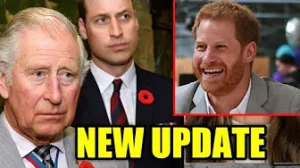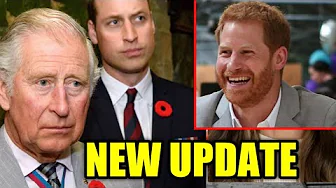Prince William accept to stand by King Charles as he demands for the return of prince Harry to UK

### Prince William Stands by King Charles as He Demands the Return of Prince Harry to the UK
In a surprising yet significant show of solidarity, Prince William has publicly accepted his role alongside King Charles III as they navigate the complex dynamics of the royal family, particularly regarding the potential return of Prince Harry to the UK. This development comes amid ongoing discussions about the future of the monarchy and the necessity of familial unity in the face of challenges.
Recent reports indicate that King Charles is keen on mending the rift with his younger son, Prince Harry, and is advocating for his return to the UK. The King’s desire to reunite the family reflects a broader vision of healing and reconciliation within the royal household. After years of public scrutiny and media speculation surrounding Harry’s departure from royal duties, this move signifies a potential turning point in their relationship.
Prince William’s acceptance of this initiative showcases his commitment to familial bonds, despite the tensions that have simmered since Harry and Meghan Markle stepped back from their royal roles. Sources close to the royal family reveal that William recognizes the importance of unity, especially as the monarchy faces evolving public expectations and pressures. He has reportedly expressed his support for Charles’s efforts to create an environment where healing can occur, understanding that the public sentiment around family ties remains strong.
This decision comes at a critical time for the royal family. As King Charles embarks on his reign, he is tasked with modernizing the monarchy while also preserving its traditions. The potential return of Prince Harry—who has often been seen as a symbol of a new, progressive royal era—could play a pivotal role in bridging generational gaps and appealing to younger audiences. By standing by his father, William signals his readiness to embrace change and adapt to new realities.
However, the path to reconciliation is fraught with challenges. Public opinion remains divided, and the media’s relentless scrutiny can complicate efforts to heal old wounds. William is acutely aware of the complexities involved, having navigated his own relationships within the family. His support for Charles’s initiative may also indicate a desire to bring closure to the lingering tensions that have affected family dynamics and public perception.
Moreover, William’s stance underscores a commitment to the future of the monarchy. As the family faces scrutiny over its relevance in contemporary society, a united front could enhance public confidence in royal leadership. William recognizes that for the monarchy to thrive, it must demonstrate resilience and adaptability, qualities that can be exemplified through familial reconciliation.
In the meantime, the royal family remains hopeful that open dialogue can pave the way for Harry’s return. Discussions about Harry’s future role within the family and his potential involvement in royal duties are ongoing. A successful reunion could not only heal personal relationships but also strengthen the monarchy as a whole, showcasing its ability to evolve while maintaining its core values.
In conclusion, Prince William’s acceptance to stand by King Charles in the quest for Prince Harry’s return reflects a pivotal moment for the royal family. It demonstrates a commitment to unity, healing, and the future of the monarchy. As they navigate these complex waters, the hope is that reconciliation will lead to a more cohesive royal family, capable of addressing contemporary challenges while honoring its rich traditions. The world watches closely, eager to see how this unfolding narrative will shape the monarchy’s legacy in the years to come.

